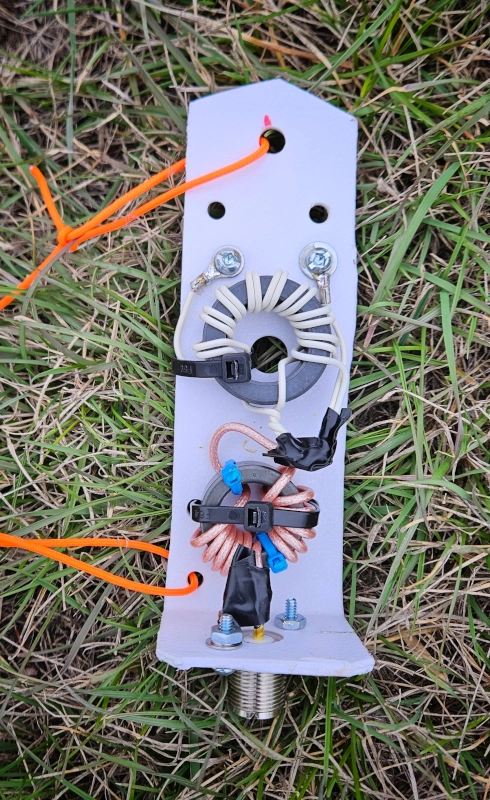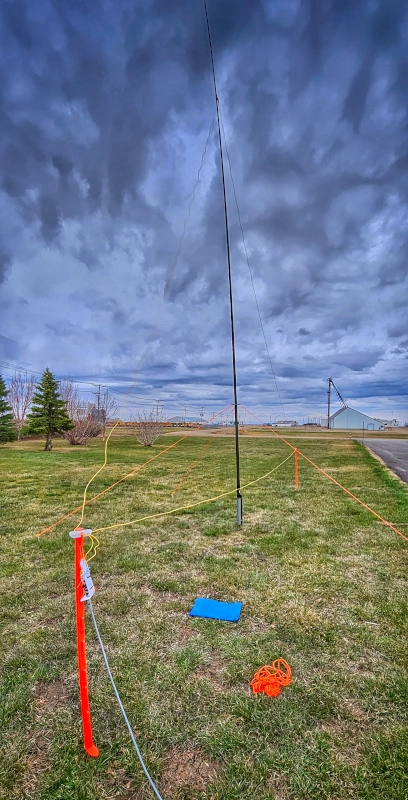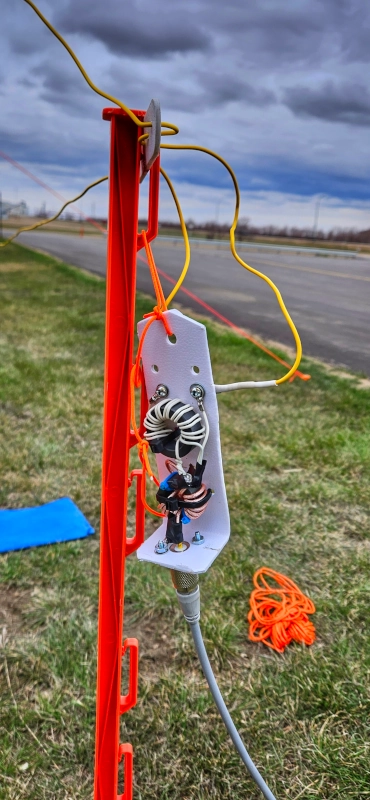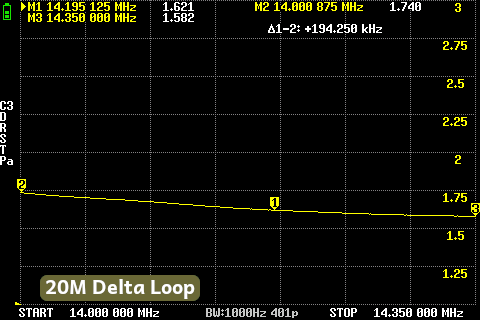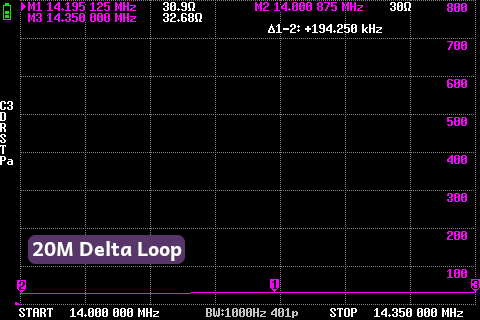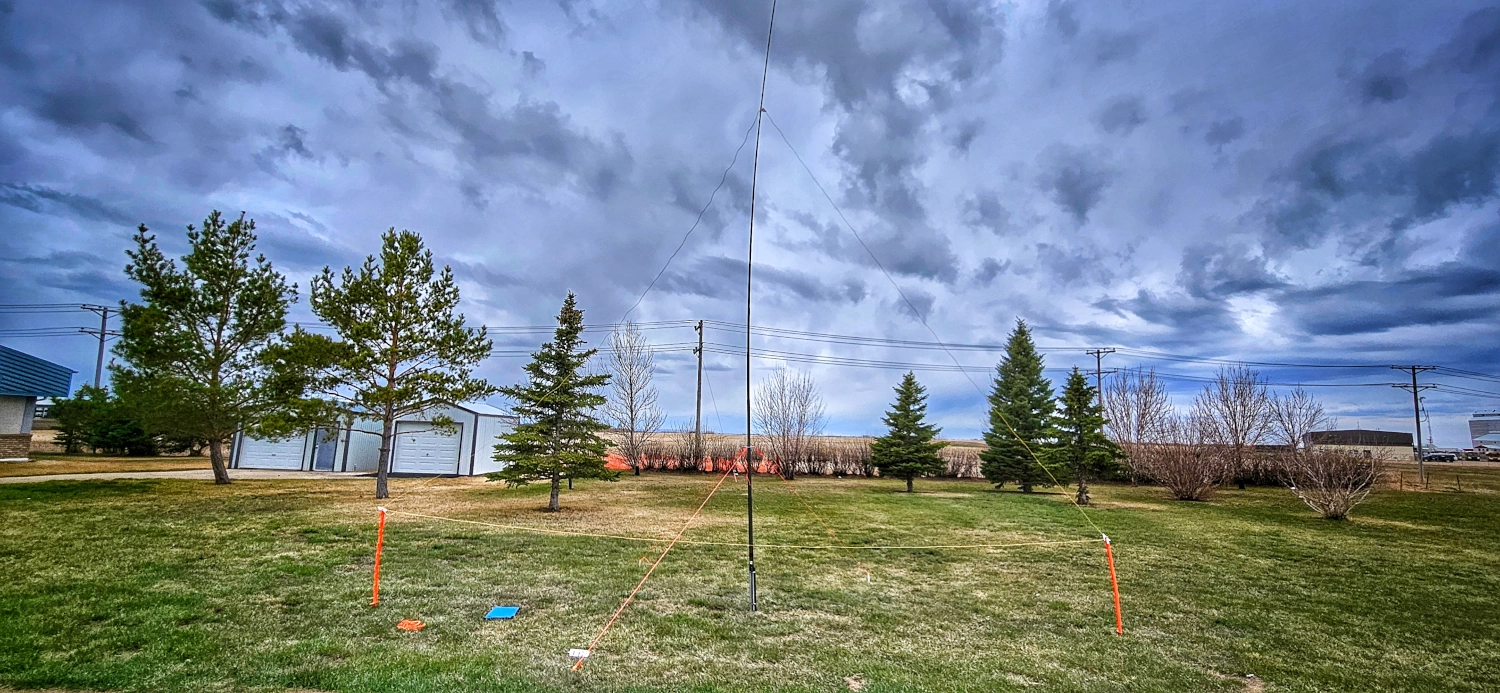Delta Loop
Loop antennas are lot of fun to play around with and have lots of advantages for Ham Radio. I made a 20M Delta Loop a couple of years ago. Recently, I built a new 4:1 hybrid balun for it.
UPDATE: Since this post I have moved to using a 2:1 balun and it’s better. See the updated post here.
Advantages
When I first built this and set it up, what struck me right away was how nice and quiet this antenna is compared to my QTH Random Wire. It’s a quiet antenna, giving it huge advantage in a noisy, urban environment. It also offers Polarization Flexibility. A Delta Loop can be configured for horizontal, vertical, or mixed polarization by adjusting feed point and orientation, offering versatility for different propagation conditions. When vertically oriented, Delta Loops produce a lower angle of radiation, which is beneficial for long-distance (DX) communication. They also generally have a broader bandwidth than dipoles, allowing effective operation over a wider frequency range.
For negatives, they are also honkin’ big and kind of a pain to deploy. You need lots of space to accommodate the full wave wire length. And, depending on how you feed them, they will require some impedance matching. I’ve heard 2:1 or 4:1 ratios being the most common. But you can adjust this if you squish the antenna. The more elongated you make the antenna the closer it gets to ~200 ohms of impedance. There is already a great article on Delta Loop Theory by Dale, WB6BYU that you should check out.
Hybrid Balun
I made a cutting board test setup and it’s rather ugly. But it works! The transformer core is a Type 61 {Size: 1.400” (35.56mm) OD. Core: 5961002701} with 8 bifiliar turns of wire. The choke is 12 turns of RG-316 coax on a Type 31 {Size: 1.142” (29.01mm)OD. Core: 2631801202}. This is the same hybrid balun used in the OCFD.
The Setup
As I mentioned already, the setup is kind of a pain. I used the DX Commander expedition mast for the apex mount. This requires some guying to keep the mast up. I manufactured a guying disk from plastic puck board that slips over the mast from the top. It gives tying points for paracord down to ground stakes. I use a simple taught-line hitch for tension. I also used 2 plastic electric fence posts to hold out the corners of the antenna. It’s quite stable with the little bit of guying. I laid the whole thing out on the grass first to get the apex height set correctly with the electric fence posts. Then I stood up the posts and then the mast.
Field Test Results
The NanoVNA sweeps are reasonable, but I think there’s too much impedance transformation. It’s roughly 30 ohms. So I could probably squish the antenna and deploy it in a bit wider shape. I will have to try this next time round. The 10M harmonic also cooperated with this loop deployment.
There was a minor solar storm going on during the setup so I didn’t really bother trying to make any contacts. I listened for a few POTA CW stations but conditions were rather abysmal. I am curious about trying this with a 2:1 balun to see if that might be a better match too.
73 de VE5REV


